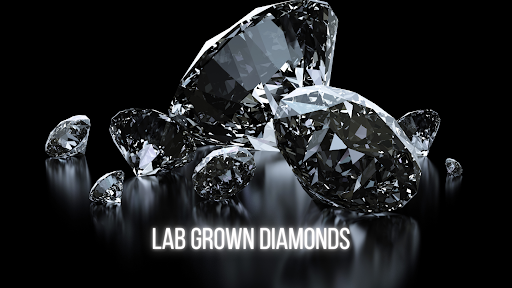Engagement rings are a symbol of love and often a major investment for the people we love most. More and more couples now delay marriage or select alternative financial arrangements like shared finances or prenuptials. The average cost of an engagement ring can add stress to an already expensive moment.
That’s why it’s not the traditional diamond engagement rings that are under threat from the rise of lab grown diamonds alone, but its future as an engagement ring in general. Lab grown diamonds offer a variety of choices and that’s what makes them a great substitute for natural ones.
You might be thinking “are lab grown diamonds real?”, “Can it truly become the dominant theme in engagement ring choices? This article discusses the lab grown diamond process and the future. How it affects our loved ones, as an expression of how much we cherish them.
What are Lab Grown Diamonds?
Lab grown diamonds are chemically engineered diamonds made in a laboratory. They are almost identical to diamonds mined from the earth.
So, lab grown diamonds do not have impurities such as inclusions or flaws that come with the natural variations that are inherent to the earth’s crust.
Lab grown diamonds have garnered many questions over time. The most popular of those questions being “are lab grown diamonds real?” They are created in a laboratory and not extracted from the ground. The reason is, the quality of the lab grown diamond is determined by what the lab makes the diamond to be and not what has been provided by mother nature.
They are created by a process called “growth modification.” In this process, it is grown in a “growth chamber” at low temperatures. The lab grown diamond is then exposed to an ultraviolet black light that destroys the yolk inside the seed, causing it to grow into a tiny crystal.
A lab grown diamond crystal under the right conditions is grown in a container. The crystal will grow larger until the walls of the container are too weak to support it then it collapses. It allows the diamond to fall out of the crystal and begin the growth-modification process all over again.
Once the diamond has been grown and the walls of the container have been weakened, it is extracted using a tiny needle. The extracted diamond is then placed in a “growth chamber” where it’s exposed to “modification light.”
The modification light causes the black carbon layer on the surface of the diamond to be absorbed by the surface of the diamond. After, it leaves a pure “cornered” white diamond underneath. The lab grown diamond is then polished and transformed into a gemstone.
Why Lab Grown Diamonds Are Popular Right Now for Engagement Rings
Buying a diamond engagement ring is an expensive decision, but it only becomes expensive when you calculate the cost of an engagement ring to other costs associated with getting engaged.
That’s why engagement ring trends are important. They can enable us to predict what is going to become more and more expensive as the years progress.
Lab grown diamonds are currently popular as engagement rings because people are more aware of the benefits and costs of diamonds than ever before.
If a diamond is grown in a lab, it is not only cheaper, but it is more eco-friendly than a mined diamond. This means that those who want to buy a proposal ring can reap the benefits of the new technology while saving money and protecting the environment.
Benefits of Using Lab Grown Diamonds in Engagement Rings
Here are some benefits for Lab Grown diamond that we believe are relevant that you should know;
- Cheaper than natural diamonds.
- Are more friendly to the environment than natural diamonds.
- Production requires minimal water usage.
- Air pollution is not involved in the manufacturing process.
- Lab grown diamonds are more resistant to scratches than natural diamonds.
- Lab grown diamonds are harder than natural diamonds.
- Are lighter than natural diamonds.
- It is ethical because they are not mined.
Lab-Grown Diamonds and the Revolution of the Diamond Industry
Lab-grown diamonds have revolutionized the diamond industry in many ways. Due to the similarity in structure to natural diamonds, they have become more preferable.
All diamonds, whether lab-grown or naturally mined have the same certificate. These certificates provide information and details about the diamond. The certificate also tells you if it is lab-grown or not. Celebrities like Meghan Markle, Lady Gaga, Nikki Reid and Zoe Kravitz have been seen wearing lab-grown diamonds.
All lab-grown diamonds are created using the same basic process, but the type of gemstone each diamond is created as ranges depending on the lab that created it.
Not all labs produce all colored diamonds, so it is important to know the type of diamond. Each diamond is created to ensure it is a diamond suitable for wearing as an engagement ring.
1. White Lab Grown Diamonds
These are made by the same method as yellow, pink, and red diamonds. However, the carbon layer on the surface of the diamond is removed so that the diamond is completely white.
2. Pink Lab Grown Diamonds
Pink diamonds are engineered using the same method as white diamonds. The only exception is that the carbon layer is replaced with the pink optical grade dye.
3. Purple Lab Grown Diamonds
Purple diamonds are created using the same method as pink diamonds. Difference is that the carbon layer is replaced with a unique purple dye that produces a purple, rather than pink, color.
4. Yellow Lab Grown Diamonds
Yellow diamonds are created by the same method as white diamonds. Exception being that yellow diamonds are created using an infrared technique to remove the black carbon layer.
How Do They Compare to Natural Diamonds?
Lab grown diamonds are almost identical to natural diamonds. The main difference between the two types of diamonds is the process and method of creation. But, natural diamonds come from the earth and are imperfect, lab grown diamonds are almost identical to natural diamonds and have few imperfections.
Natural diamonds are found in three places in the world: Botswana, Namibia, and South Africa. Natural diamonds have been mined in these areas since ancient times, using the same methods for thousands of years.
In the mid-20th century, when mines were discovered in India, laboratories outside of Africa did not produce synthetic diamonds until the 1960s.
How Lab-Grown Diamonds Will Affect the Engagement Industry
Lab-grown diamonds are getting more popular by the day and it is clear that it is not going away anytime soon. Many people are becoming aware of the unethical sourcing of blood diamonds and the environmental hazards. Therefore, they are willing to choose safer and ethical options.
Conclusion
Lab grown diamonds are becoming popular, and engagement ring trends are showing that. Natural diamonds are a beautiful symbol of love, but they are also expensive.
The best gifts not only assert an eternal connection but also convey strong emotions and that is what makes them thoughtful. If you want to show your loved ones how much they mean to you, lab grown diamonds may be the perfect gift. With all their advantages, lab grown diamonds may become the new standard for engagement rings.








